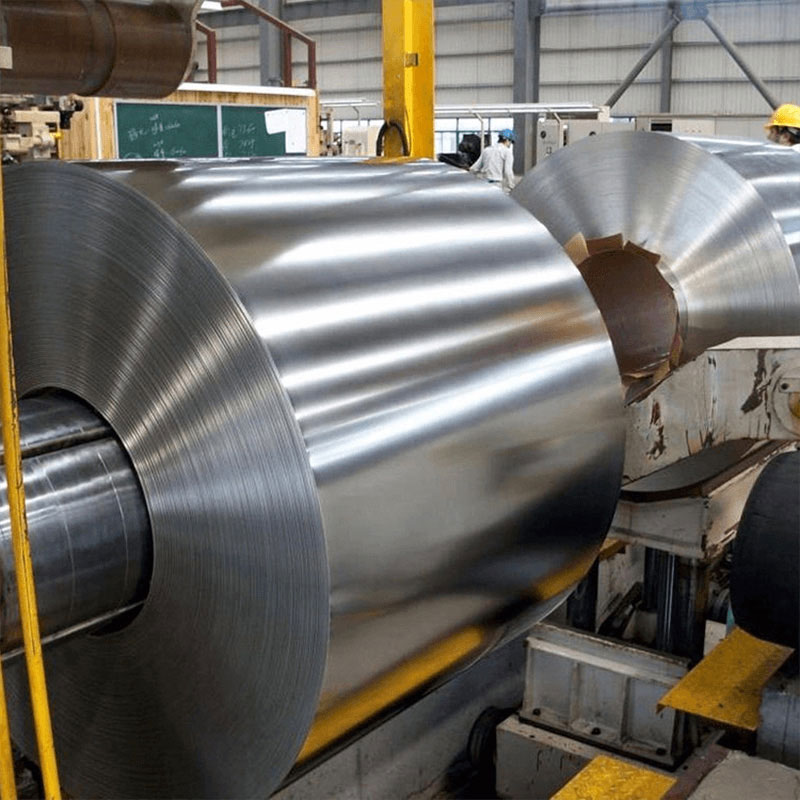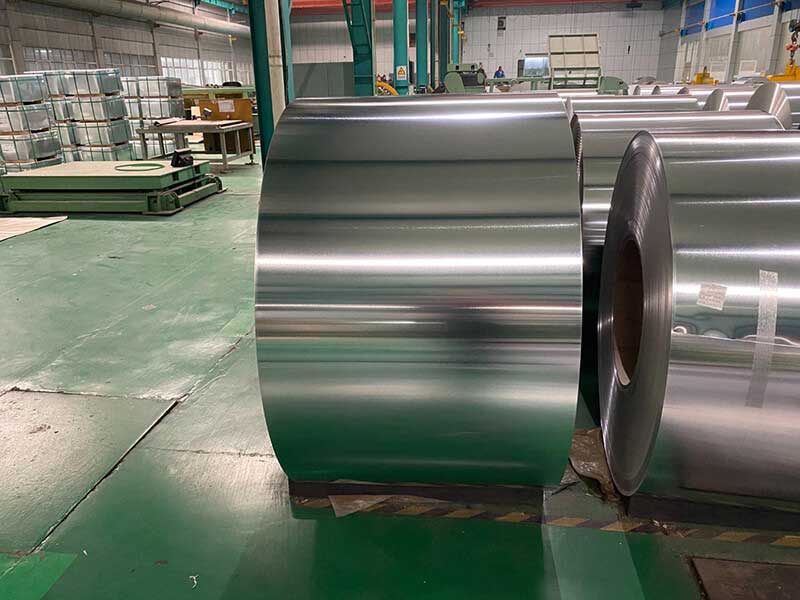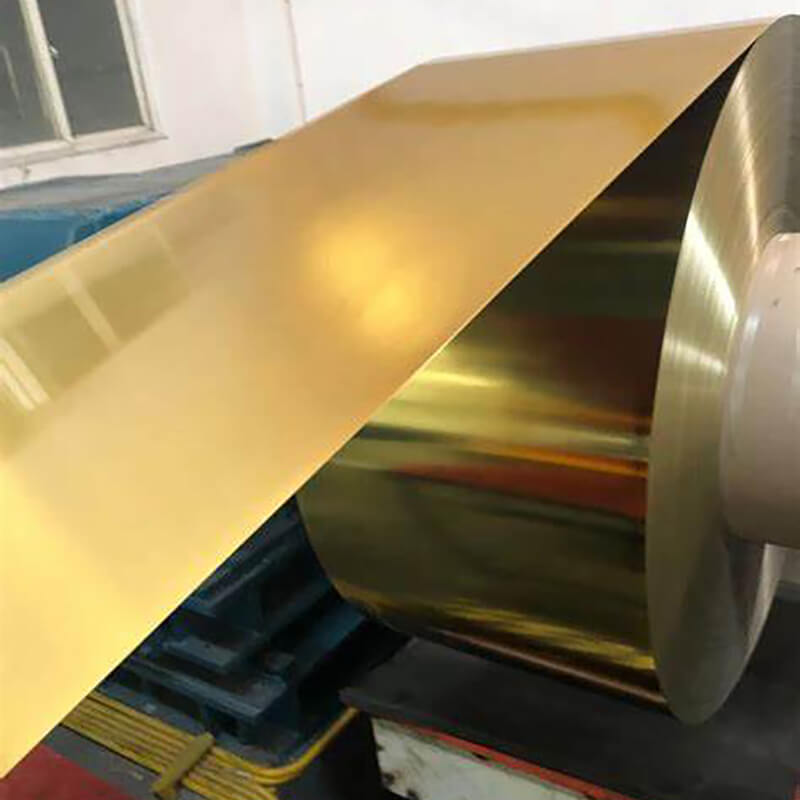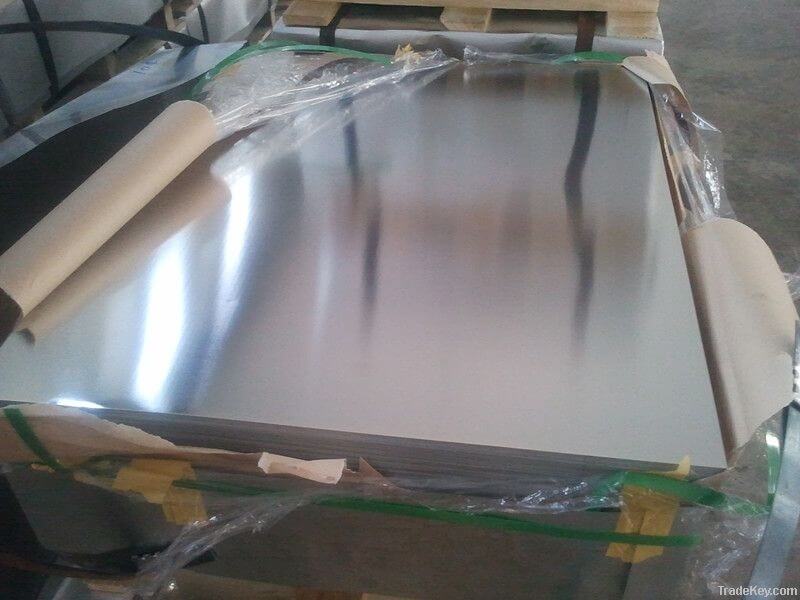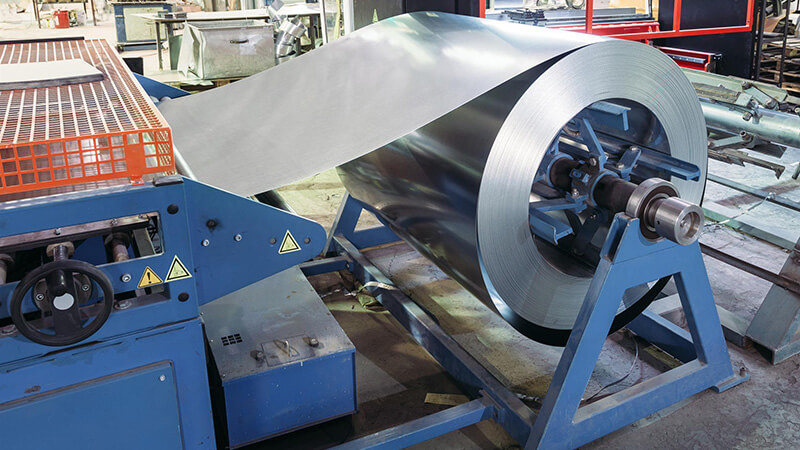What is Tin Free Steel Sheet?
Tin free steel sheet (TFS) is an electrolytic chromium plated steel consisting of a thin layer of chromium and a layer of chromium oxide deposited on a cold rolled sheet steel base (black plate) which gives it a beautiful, lustrous metallic finish on both sides. It is also known as electrolytic chromium coated steel (ECCS).
Generally, it is believed that the tin free steel sheet (TFS) is composed of four layers, including steel base, metallic chromium layer, chromium oxide layer and oil film.
Function of Each Layer of Tin free steel sheet:
- The role of steel base is similar to that of ETP, which ensures the formability of TFS usage and machining and provides strength of finished products;
- Metallic chromium layer has strong passivation capability and good corrosion resistance, but as it is cathodic coating, it can only provide mechanical protection for steel base. Besides, due to strong passivation capability of metallic chromium, an extremely thin layer of passivation film is easy to produce (chromium oxide);
- Chromium oxide layer has relatively high chemical stability, and the electrode potential of the film is more positive than that of iron. When surrounded by ordinary corrosive media, it is cathodic coating, requiring coating to protect the contents. As an amorphous layer, the layer can close pores of the metallic chromium layer and provide excellent coating adhesion;
- The role of the oil film is similar to that of ETP, and its lubrication is better than that of ETP, for tin itself is of lubricity.
Grade Type
The Tin free steel sheet is specified as per the steel base, extent of tempering, annealing method, coating weights, and the surface finish. The base steel which is used for TFS is continuously cast and aluminum killed. The base steel can be single reduced or double reduced.
The base steels are of the following three types.
Type MR – This base steel is low in residual elements and has good corrosion resistance properties. This steel is widely used for general applications.
Type L – In this type the base steel has extremely low residual elements (Cu, Ni, Co, and Mo). This steel has improved corrosion resistance for certain types of food product containers.
Type D – In type D, aluminum killed base steel is used. This type of steel is used in applications involving deep drawing or other types of severe forming which tends to give rise to Lueder’s lines. This type of steel is needed for minimizing severe fluting and stretcher-strain hazards or for use in severe drawing application.
TFS is produced in the following surface finishes.
Bright – This surface finish is luster bright. In this type of finish the surface roughness (Ra) is aimed at 0.25 micro meters. Bright finishes are normally used for general use.
Stone – This surface finish is grind finish. In this type of finish the surface roughness (Ra) is aimed at 0.4 micro meters. This type of finish makes printing and can making scratches less conspicuous.
Super stone – This surface finish is rough grind finish. In this type of finish the surface roughness (Ra) is aimed at 0.6 micro meters.
Matte – This surface finish is dull finish. In this type of finish the surface roughness (Ra) is aimed at 1 micro meter. This finish is mainly used for making crowns and DI (drawn and ironed) cans.
Hardness
Base steel strength and workability depend on steel grade, oiling method used, and particularly the degree of temper rolling. Tin free steel sheet is produced in the same tempers as tinplate. These tempers are given below. There are seven tempers (T1, T2, T2.5, T3, T3.5, T4, and T5) in case of single reduced base steel and six tempers (DR7.5, DR8, DR8.5, DR9, DR9M, and DR10) in case of double reduced base steel.
Applications
TFS is used mainly for those applications where it is not required as a sacrificial element. It is widely used for making beverage can, all purpose cans such as 18 litre cans and pail cans, etc., DRD cans, candy cans, spray cans, and various other containers. It is used (i) for bottle crown caps, and metal caps, (ii) for making photographic film cases, (iii) as a protective material for optical fiber cables, (iv) as printed circuit boards, (v) components of information communication apparatus, (vi) for home electronic product exterior part, and (vii) electrical and electronic components.


